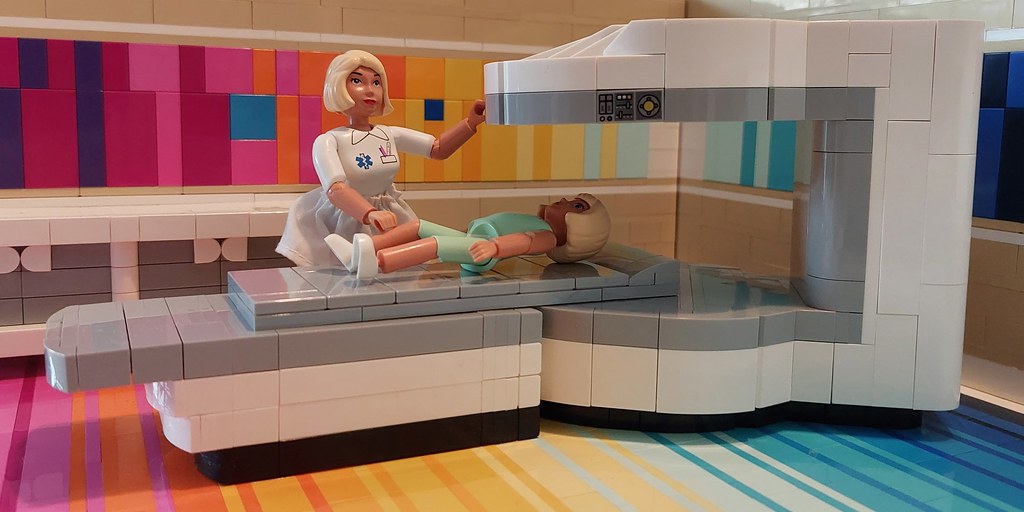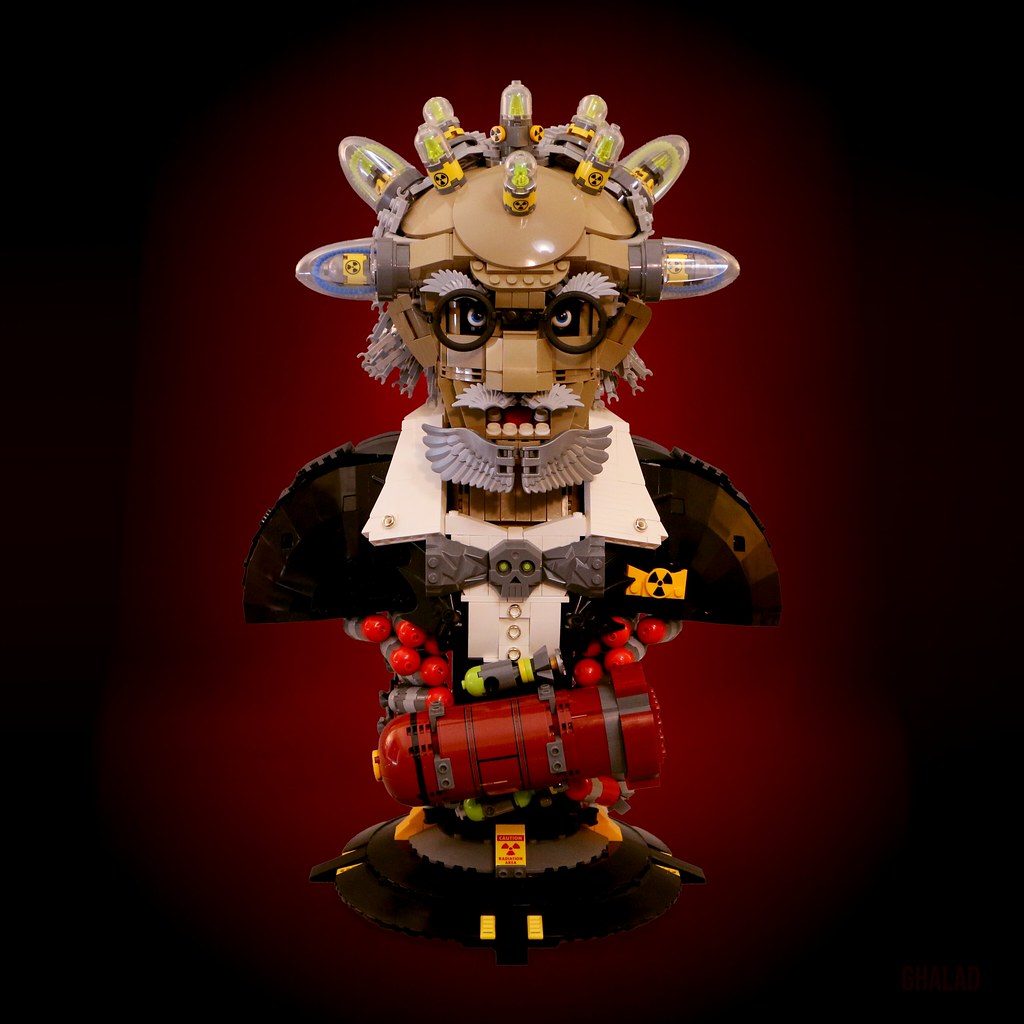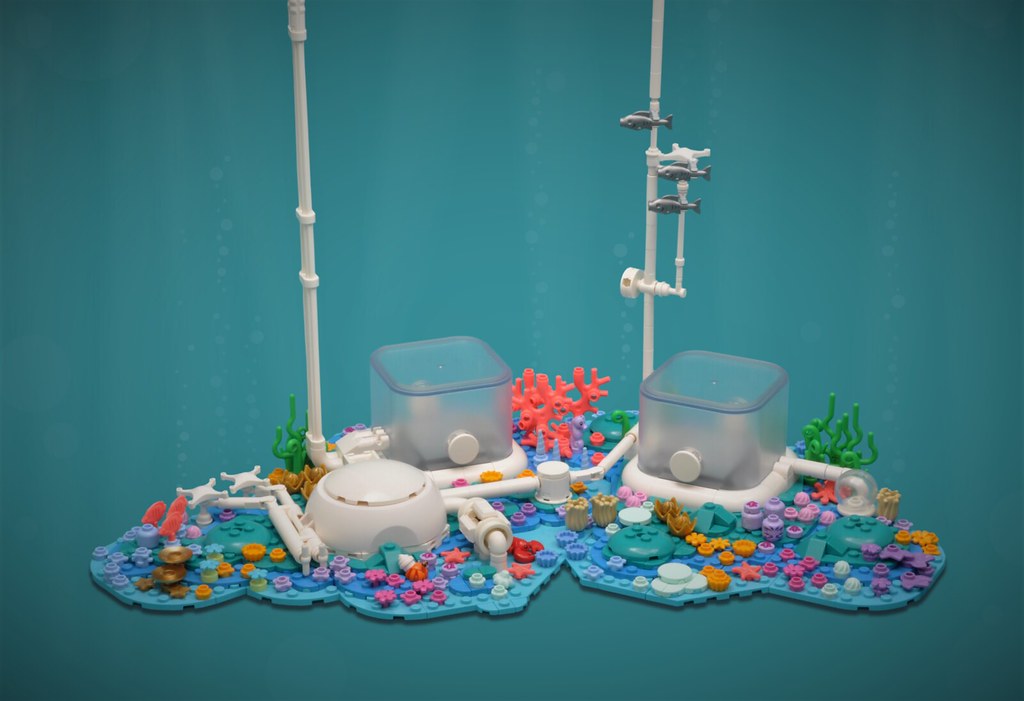No one sets a LEGO scene quite like Victor van den Berg! I mean, check out the old-school laboratory he’s brewed up! Each flask and beaker are carefully placed on the table, drawers overflowing with ingredients, and a wall of shelves loaded with tinctures and concentrates adorn this gorgeous room. Brown arches and pillars carve paths through the dark tan bricks, above a floor tiled to complement the multicolored bottled spread throughout the lab. Add all that to the lived-in touches of the workspace like the armchair in the corner or the cord of wood in a crate next to the wrought iron fireplace, and the space radiates a homey charm.
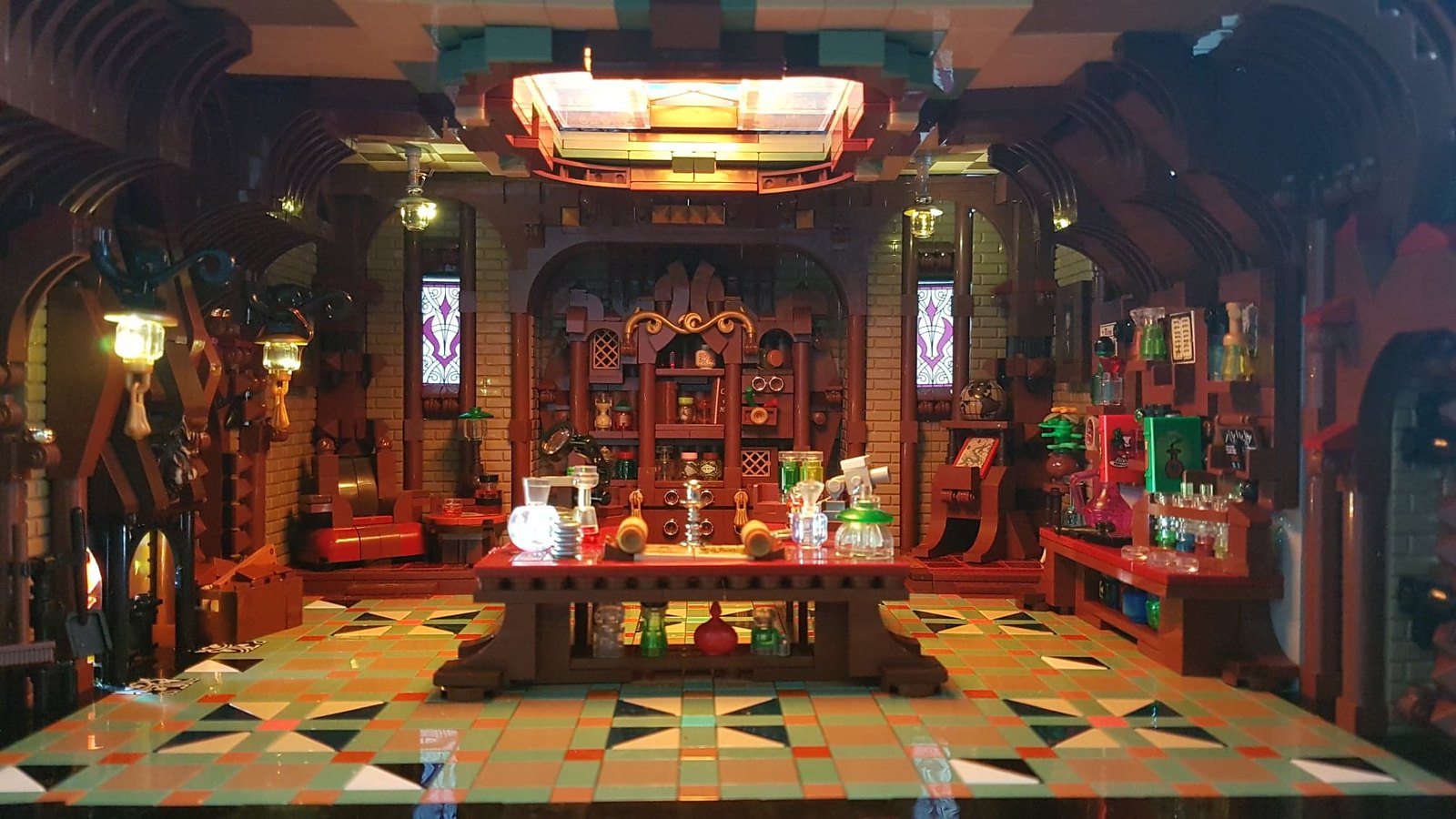
But nothing adds warmth to this workspace like Victor’s excellent use of light. From the fireplace, the hanging lanterns, and especially the windows to the rear of the space, light illuminates the build in an uneven and realistic manner. But the focal point has got to be the sunlight pouring in through the skylight. It highlights all the detailed instruments and vials on the central table, best viewed in the photo below. As someone who’s put in a couple of years standing at the lab bench and read a few too many books on the history of science, the equipment here is spot-on for that of the age. Nothing like determining the index of refraction the old-fashioned way!
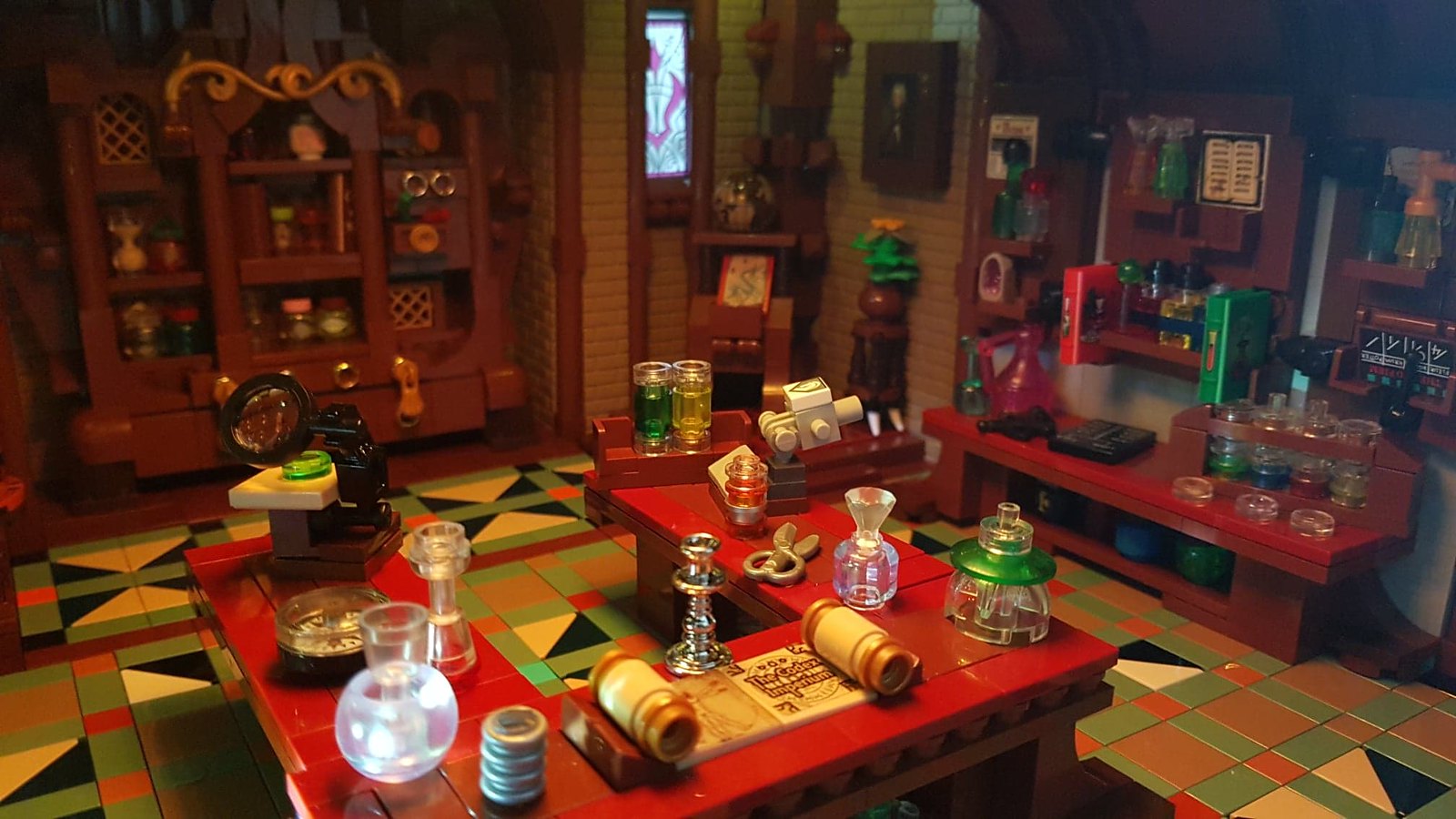
The Brothers Brick is funded by our readers and the community. Articles may include affiliate links, and when you purchase products from those links, TBB may earn a commission that helps support the site.


